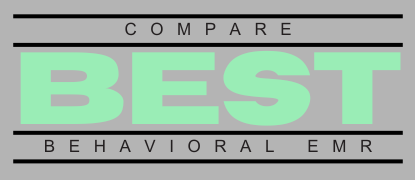
Why Behavioral Health Practices Are Turning to EMR Data Analytics
Imagine this: You’re reviewing patient progress notes late on a Friday, trying to spot trends across sessions. You think, “Did this client’s symptoms improve after we switched treatment plans? Or was it just a fluke?” Without hard data, you’re stuck guessing. That’s where EMR data analytics becomes a game-changer.
If you’re a behavioral health clinician or practice owner, you’re probably juggling clinical care, documentation, and business operations, all while trying to keep your head above water. The good news? Today’s behavioral health EMR systems are smarter than ever, giving you tools to make data-driven decisions that actually improve patient outcomes.
What Is EMR Data Analytics, and Why Should You Care?
In plain terms, EMR data analytics is the process of examining your electronic health record (EHR) data to identify patterns, track progress, and make informed decisions. Think of it like having a clinical crystal ball; except it’s backed by real numbers instead of mystical fog.
With the right behavioral health EMR, analytics can help you:
- Measure treatment effectiveness over time
- Identify at-risk patients before crises occur
- Uncover operational inefficiencies
- Meet compliance and reporting requirements with ease
And best of all? It doesn’t require a Ph.D. in data science.
How EMR Data Analytics Improves Patient Outcomes
1. Tracking Clinical Progress Over Time
Let’s say you’re treating a client diagnosed with major depressive disorder. Over several months, you’ve adjusted medications, introduced CBT, and modified session frequency. With a robust EMR like Opus or TherapyNotes, you can chart symptom scores from standardized assessments like PHQ-9 or GAD-7 and visualize progress over time.
This makes it easier to:
- Spot trends, positive or negative
- Adjust treatment plans based on evidence
- Communicate progress clearly to clients and payers
2. Identifying At-Risk Clients
Most modern behavioral health EHRs allow you to set up alerts for red flags, like missed appointments, deteriorating scores, or medication non-compliance. Instead of relying on memory (let’s be honest, we’re all human), your EMR can help you proactively intervene before a crisis.
Bonus: Some platforms like Opus even allow for automated reminders and check-ins, reducing the chances of clients falling through the cracks.
3. Enhancing Care Coordination
Behavioral health often involves collaboration with primary care providers, specialists, or family members. EMR data analytics can help you generate concise, data-rich summaries that improve interdisciplinary communication. That’s especially handy when trying to secure prior authorizations or justifying treatment plans to insurance companies.
Using EMR Analytics to Streamline Operations
Improving patient care is the goal, but let’s not ignore the business side of things. EMR data analytics can also optimize your practice management:
- No-show tracking: Identify patterns in client attendance and implement strategies like reminder texts or schedule adjustments.
- Staff productivity: Use clinician-level reporting to balance caseloads and improve time management.
- Billing insights: Spot denials, delays, or underbilling by analyzing revenue cycle metrics.
Many behavioral health EMRs, including Opus, SimplePractice, and TheraNest, offer built-in dashboards to make this kind of reporting accessible, not just to data nerds, but to everyday clinicians and admins.
What to Look for in a Behavioral Health EMR with Analytics
Not all EMRs are created equal. When evaluating systems, keep an eye out for these essential features:
- Customizable reports: Can you generate reports tailored to your practice’s specific needs?
- Outcome tracking tools: Does it support standardized assessments and progress tracking?
- Compliance support: Are there audit logs and metrics to support accreditation (e.g., CARF, Joint Commission)?
- User-friendly dashboards: Do the analytics make sense at a glance, or require a magnifying glass and 30 tabs?
Also, look for integrations with your CRM or RCM systems. Some platforms offer all-in-one solutions; others (like Opus) integrate seamlessly with billing and marketing tools to eliminate data silos.
Getting the Most Out of Your EMR Data
Having access to data is great, but knowing how to use it is even better. Here are a few tips:
- Schedule regular “data review” meetings with your team.
- Use client progress data during sessions to boost engagement and motivation.
- Benchmark your metrics against industry standards to identify areas for growth.
Need inspiration? The U.S. Department of Health and Human Services offers helpful resources on using health data to improve care delivery. You can check them out here.
Real Talk: Common Pitfalls to Avoid
So, what can go wrong? Well, a few things:
- Data overload: Too many metrics can lead to paralysis. Focus on what truly matters.
- Ignoring staff feedback: If your team finds the dashboard confusing, they won’t use it.
- Analysis without action: Insight is wasted unless it leads to change. Review, adjust, repeat.
Conclusion: Let Your EMR Work Smarter, So You Don’t Have To
Whether you’re a solo practitioner or managing a multi-site behavioral health group, the right EMR data analytics tools can elevate your care and streamline your operations. From tracking outcomes to reducing no-shows and improving compliance, your behavioral health EMR should be more than just a digital filing cabinet; it should be your clinical co-pilot.
If you’re not sure where to begin, why not start with a free practice analysis? It’s a no-pressure way to explore how your current systems stack up and where improvements are possible.
And remember: data isn’t about replacing your clinical intuition; it’s about backing it up with evidence, so you can deliver the best care possible.
